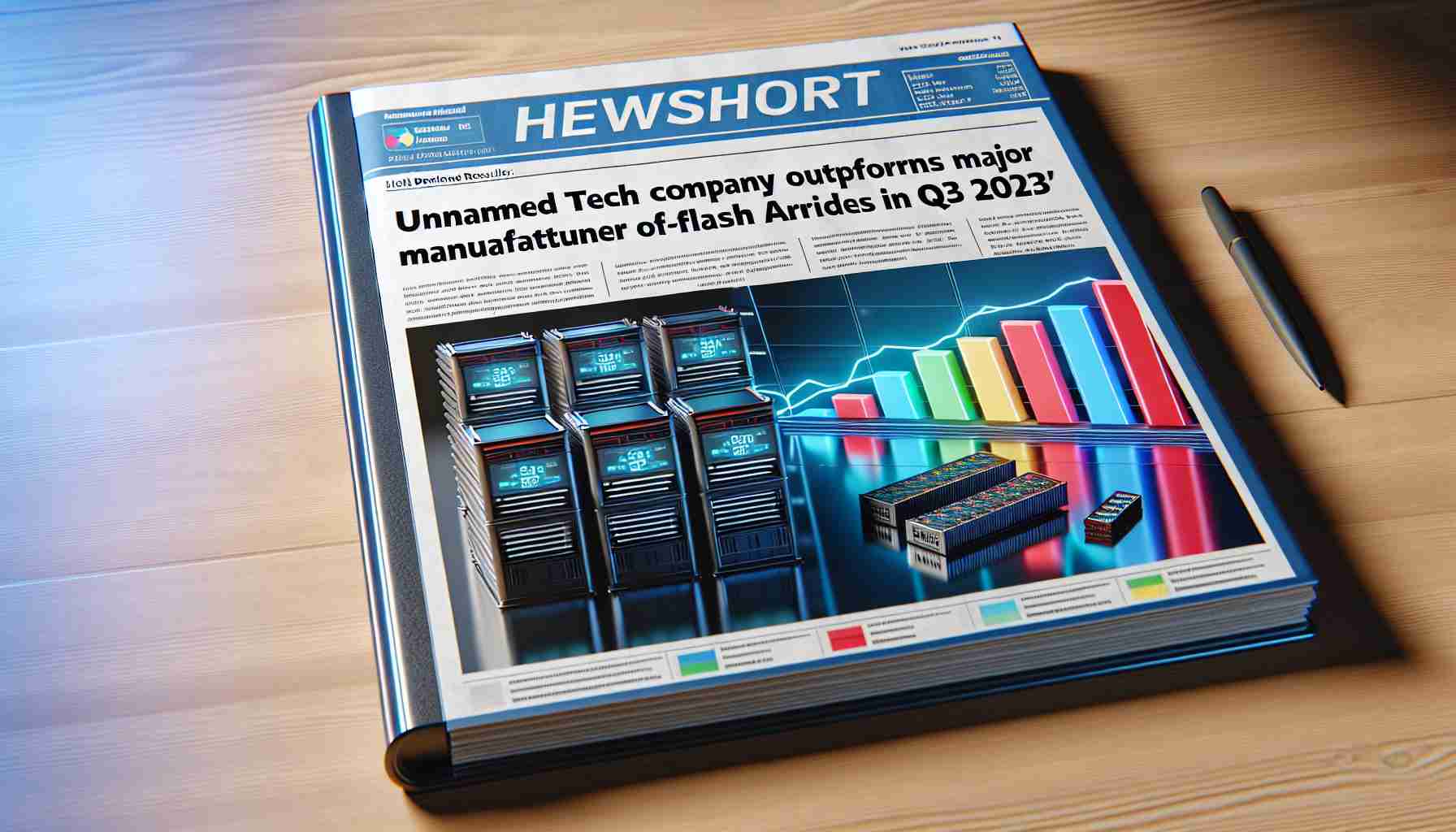Huawei has overtaken Dell EMC to become the world’s largest producer of all-flash array (AFA) storage infrastructure, according to a recent analysis by Gartner. The AFA market generated $2.658 billion in revenue in the third quarter of 2023, marking a four percent decrease compared to the same period last year. Despite the overall decline in the external storage market, all-flash storage accounted for 53.9 percent of the $4.98 billion market. Primary storage experienced a 15 percent annual decline, while secondary storage saw a two percent increase and backup and recovery declined by 27 percent.
Based on data from analyst Aaron Rakers at Wells Fargo, Huawei secured a 20 percent market share with $548 million in AFA revenue, surpassing Dell EMC’s 19 percent market share and $516 million in revenue. The top seven suppliers in the AFA market are illustrated in Rakers’ pie chart.
During the same period, Dell EMC’s AFA revenue dropped by 23 percent year-on-year, with HPE experiencing a 20 percent decline. NetApp’s AFA revenue also decreased by nine percent, while Pure Storage bucked the trend with a two percent growth. Although exact figures from Gartner are not available, it is estimated that Huawei achieved a significant year-on-year increase of approximately 25 percent.
In the previous quarter, Huawei held a 16.3 percent market share, securing the second position behind Dell EMC with 21.6 percent. NetApp ranked third with a 14.8 percent share. Considering additional calculations, IBM’s share was estimated to be 14.2 percent, while Pure Storage claimed fifth place with 14 percent. HPE and Hitachi held a 6.9 percent and 3.4 percent share, respectively.
Huawei’s impressive rise in the AFA market can be attributed to its strong performance in the Asia Pacific region, as well as the Middle East and Africa. Notably, the company has not yet entered the North American market. Pure Storage has also demonstrated steady growth, surpassing NetApp in market share. On the other hand, Hitachi’s share is expected to decline, potentially making way for VAST Data or Lenovo to fill its spot in the rankings.
While the overall external storage capacity shipped in the quarter decreased by seven percent annually, the proportion of flash storage increased from 15.6 percent to 21.5 percent year-on-year. Additionally, Gartner reported that the hyperconverged infrastructure (HCI) market reached a total value of $2.03 billion, representing a two percent decline compared to the previous year. Dell EMC remains the dominant player in the HCI market, with a 33 percent market share.
Huawei’s achievement in becoming the leading producer of all-flash arrays highlights its growing dominance in the storage infrastructure market. With its continued success in various regions across the globe, Huawei is poised to maintain its upward trajectory in the industry.
Huawei stał się największym producentem infrastruktury przechowywania all-flash array (AFA) na świecie, wyprzedzając Della EMC, zgodnie z ostatnią analizą przeprowadzoną przez firmę Gartner. Rynek AFA wygenerował dochód w wysokości 2,658 miliarda dolarów w trzecim kwartale 2023 roku, co oznacza spadek o cztery procent w porównaniu z tym samym okresem ubiegłego roku. Pomimo ogólnego spadku na rynku zewnętrznego przechowywania, przechowywanie all-flash stanowiło 53,9 procent rynku o wartości 4,98 miliarda dolarów. Przechowywanie pierwotne odnotowało spadek o 15 procent rok do roku, podczas gdy przechowywanie wtórne wzrosło o dwa procent, a tworzenie kopii zapasowych i odzyskiwanie spadło o 27 procent.
Na podstawie danych analityka Aarona Rakersa z Wells Fargo, Huawei zdobył 20 procentowy udział w rynku przychodów z AFA w wysokości 548 milionów dolarów, wyprzedzając Della EMC ze 19 procentowym udziałem w rynku i przychodami w wysokości 516 milionów dolarów. Siedmiu największych dostawców na rynku AFA jest przedstawionych na wykresie kołowym Rakersa.
W tym samym okresie przychody z AFA Della EMC spadły o 23 procent rok do roku, a HPE odnotowało spadek o 20 procent. Przychody z AFA NetApp również spadły o dziewięć procent, podczas gdy Pure Storage przeciwstawiło się tendencji wzrostem o dwa procent. Chociaż dokładne dane z Gartner nie są dostępne, szacuje się, że Huawei odnotował istotny roczny wzrost wynoszący około 25 procent.
W poprzednim kwartale Huawei zajmował drugie miejsce z 16,3 proc. udziałem w rynku, ustępując Dellu EMC z 21,6 proc. NetApp zajął trzecie miejsce z udziałem wynoszącym 14,8 proc. Dodatkowe obliczenia sugerują, że udział IBM wynosił 14,2 proc., a Pure Storage zajęło piąte miejsce z udziałem w wysokości 14 proc. HPE i Hitachi zajmowały odpowiednio 6,9 proc. i 3,4 proc. udziału w rynku.
Imponujący wzrost Huawei na rynku AFA wynika z jego silnej pozycji w regionie Azji-Pacyfiku, a także na Bliskim Wschodzie i w Afryce. Należy zauważyć, że firma nie jest jeszcze obecna na rynku Ameryki Północnej. Pure Storage również odnotowało stabilny wzrost, wyprzedzając NetApp pod względem udziału w rynku. Z drugiej strony, spodziewa się spadku udziału Hitachi, co potencjalnie otworzy drogę dla VAST Data lub Lenovo, aby zająć jego miejsce w rankingu.
Podczas gdy ogólna pojemność zewnętrznych nośników danych wysłanych w tym kwartale spadła o siedem procent rok do roku, udział przechowywania flash zwiększył się z 15,6 procent do 21,5 procent w skali roku. Ponadto firma Gartner podała, że rynek infrastruktury hyperconverged (HCI) osiągnął wartość 2,03 miliarda dolarów, co oznacza spadek o dwa procent w porównaniu z poprzednim rokiem. Dell EMC nadal pozostaje dominującym graczem na rynku HCI, posiadającym 33 procentowy udział w rynku.
Osiągnięcie przez Huawei pozycji największego producenta all-flash array podkreśla jego rosnącą dominację na rynku infrastruktury przechowywania danych. Dzięki dalszemu sukcesowi w różnych regionach na całym świecie, Huawei ma szansę utrzymać swoją wzrostową trajektorię w branży.
The source of the article is from the blog bitperfect.pe
